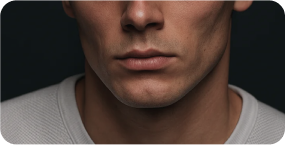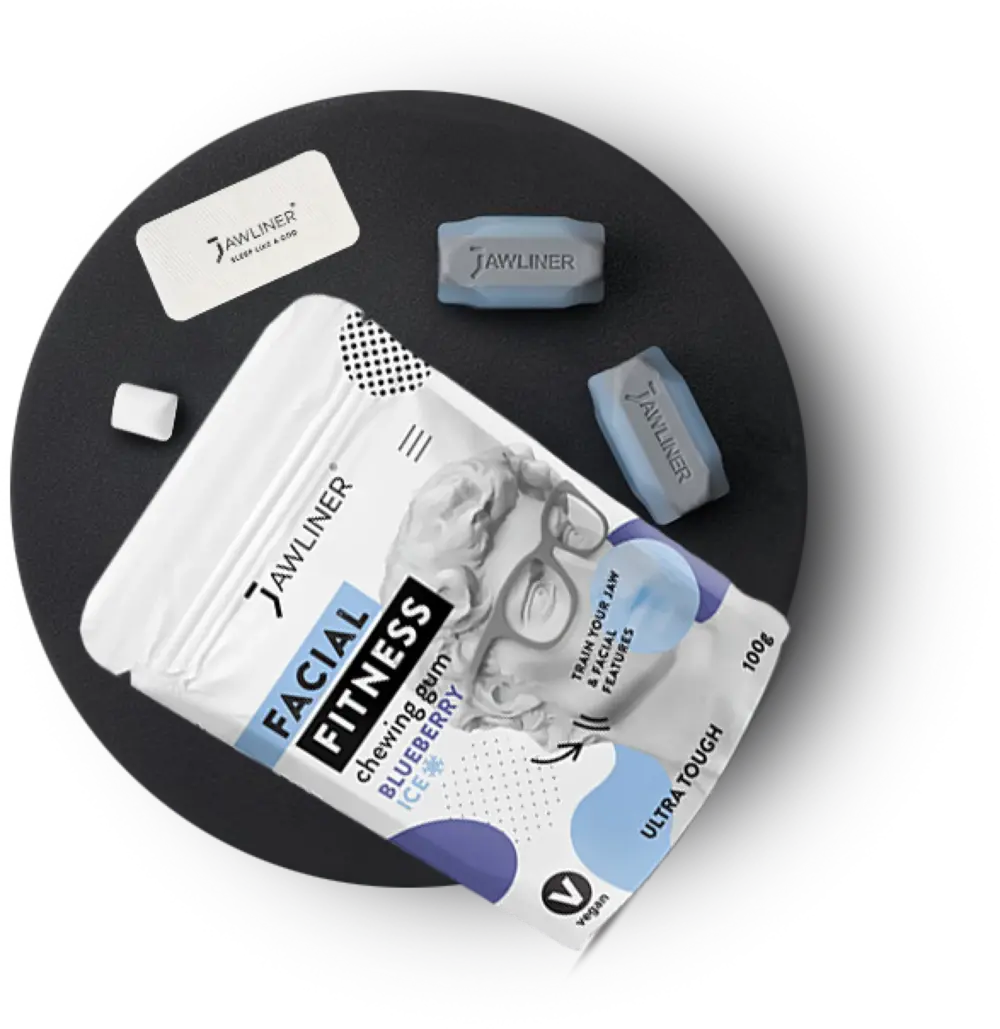Want to breathe more easily at night or perform better during sports? We compare nose clips and nose plasters — both known as anti-snoring remedies — so you can decide which one works best for you.
Why snoring isn't just annoying, it also costs you performance
Snoring can do more than just fill your bedroom with noise. It can make you tired and less focused the next day. When nasal breathing is restricted, your body works harder to get enough air, which can lead to breathing problems such as shortness of breath or oxygen deprivation. This affects your sleep quality and energy levels.
Breathing freely means more oxygen, more energy, and feeling better in the morning. Improved nasal breathing can also significantly boost your performance in everyday life and during sports. Snoring noises are often a sign that there is a problem somewhere in the airflow, for example in the upper airways.
This is exactly where aids such as nasal clips or nasal plasters come in. They can facilitate airflow through the nose and thus ensure more comfortable breathing.
The most common causes of snoring
Snoring can have many causes—some are easy to fix, others are related to individual anatomy. These factors often play a role:
- Blocked nasal breathing due to a cold, allergies, or a specific nose shape – the sinuses may also be affected
- Relaxed throat muscles during sleep that restrict airflow
- Excess weight, which puts additional pressure on the airways
- Sleeping on your back, which makes it easier for the tongue to fall back
- Alcohol consumption before bedtime, which reduces muscle tension
Regardless of the cause, when the air supply is obstructed, breathing resistance increases. This is exactly where aids such as nasal clips or nasal plasters can help by keeping the nasal passages more open and thus facilitating airflow.
Nasal Breathing and Its Importance for Restful Sleep
Free nasal breathing is the foundation for restorative sleep and full energy during the day. When the nasal passages are blocked – whether from a stuffy nose, a deviated septum, or allergies – the resistance to breathing increases. The result: less oxygen, more snoring, and waking up tired in the morning.
This is where tools like nasal strips, nose tapes, or nasal dilators come into play. They gently open the nostrils and can improve airflow. Important: always look for skin-friendly materials and the correct fit.
The easier the air circulates, the more relaxed your night will likely be. The right support for your nasal breathing can make all the difference for smooth breaths and a refreshed awakening.
Nose Clip: Small, Reusable, Easy to Use
A nose clip works in a simple way. It is placed on the nostrils and functions like a nasal dilator (a tool that keeps the nose open). Depending on the design, it slightly widens the nostrils or applies gentle pressure to certain points. This can improve airflow and provide more comfortable breathing during sleep or sports.
Many use a nose clip against snoring, while others apply it specifically in training – for example, a nose clip during sports to optimize breathing.
Nose Clip Features:
- Contains magnetic elements that must be disposed of after use → higher raw material consumption and more expensive in the long run than disposable strips
- Fits into any sports or travel bag
- Visible when worn, depending on the model
- Can feel slightly uncomfortable with prolonged use
- Smaller contact surface due to magnetic points, which may result in weaker hold during sweaty sports
- Depending on the model, attached externally to the nostrils or inserted internally into the nasal passages
Nasal Strips: Affordable and Effective, Especially for Sports
A nasal strip is essentially a flexible band – also called a nose strip or nasal tape – with adhesive pads at the ends. You place it across the bridge of your nose, and it gently lifts the nostrils. This widens the nasal passages, allowing air to flow more easily.
Many use a nasal strip against snoring at night, while others rely on it during sports or under strain, for example when dealing with a cold or allergies.
Nasal Tape Features:
- Easy and quick to apply
- Discreet and comfortable to wear
- Each strip is hygienically fresh and ready to use
- No cleaning required
- Hypoallergenic and skin-friendly
- Popular among athletes (e.g., Tour de France)
Direct Comparison: How Nose Clip & Nasal Strips Differ
Both tools are used as anti-snoring aids to make nasal breathing easier. Still, there are differences in design, application, and practicality. Here’s a compact comparison between the nose clip and nasal tape so you can find the right solution:
|
Criterion |
Nose clip (nose dilator) |
Nose tape |
|
Reusable vs. disposable |
Magnetic elements can only be used once, higher raw material consumption & more expensive in the long term |
Disposable product, fresh every time |
|
Comfort during sleep/training |
Noticeabledepending on nose shape |
Very light, barely noticeable |
|
Discreet |
Visible upon closer inspection |
Discreet, almost invisible |
|
Handling |
Short familiarization period required |
Ready for immediate use, no cleaning required |
|
Air supply |
Usuallyspreads the nostrils from the inside |
Lifts the nostrils from the outside |
|
Price |
Higher due to metal insert and disposable magnets |
Inexpensive, especially in multipacks |
|
Load capacity |
Smaller fixing surface, may come loose more quickly when sweating |
Extra large adhesive surface, holds reliably even under stress and when sweating |
Application – How to Wear It Correctly
The way you apply your aid determines how well it fits and how comfortable it feels. With a nose clip that is worn inside the nostrils, the sensation may never feel truly pleasant. In that case, the tool is probably not suitable for you, and a nasal strip or nose tape might be the better option.
Step-by-Step:
- Thoroughly clean and dry the skin on your nose
- Apply the product according to the instructions
- Press gently so it sits securely
- Take a few deep breaths to feel the effect
Tip for Athletes: Always test the clip or tape before warming up or engaging in high-intensity activity, so you get used to wearing it. This ensures it stays in place during strenuous exercise and supports your nasal breathing as effectively as possible.
Conclusion: Nose Clip or Nose Tape – Which Tool Is Right for You?
For many, the JAWLINER Nose Tape is the simplest way to achieve freer nasal breathing at night. No inserting, no cleaning, ready to use instantly, and skin-friendly. The nose clip can be an option for some, especially if reusability is a priority.
With a cold, congestion, or allergies, it’s worth testing both options to find out which feels more comfortable for you.
Important: Everyone reacts differently to shape, pressure, and comfort. Try it out, pay attention to how your airflow and oxygen intake feel, and then decide which one gives you the greatest benefit for sleep quality.
If you value comfort, discretion, and style, there's no way around JAWLINER Nose Tape.

FAQ: Frequently asked questions about nose clips and nose plasters for snoring
How long can I wear a nasal plaster at night?
A nose plaster is designed to be worn for one night. Apply it before going to bed and remove it in the morning. Wearing it for longer is not necessary and can put unnecessary strain on the adhesive.
Can I use nose tapes or nose clips multiple times?
A nose clip is usually reusable as long as it remains clean and intact, but you must always clean it. Nose plasters are disposable products and should be discarded after a single use.
Do nasal strips or nose clips help with allergies?
Both tools can support nasal breathing when the airways are constricted due to allergies. The effect may vary depending on the individual and the severity of the allergy, so it is worth trying them out.
Are nose tapes also suitable for sensitive skin?
JAWLINER nose tapes are hypoallergenic and skin-friendly. If you have very sensitive skin, test the tape on a small area first.
How do I clean a nose clip properly?
Rinse the nose clip with warm water after each use and dry it thoroughly. If necessary, you can use a mild, skin-friendly cleaning agent.
Can I exercise with a nose clip or nose tape?
Yes, definitely! Both tools can also be used during sports. Be sure to test them before training to ensure they fit securely and do not bother you.
Who is the JAWLINER Nose Tape particularly suitable for?
JAWLINER nose tape is ideal if you are looking for a discreet, ready-to-use tool that does not require cleaning. It is particularly suitable for nighttime use, but can also be used during sports activities.






